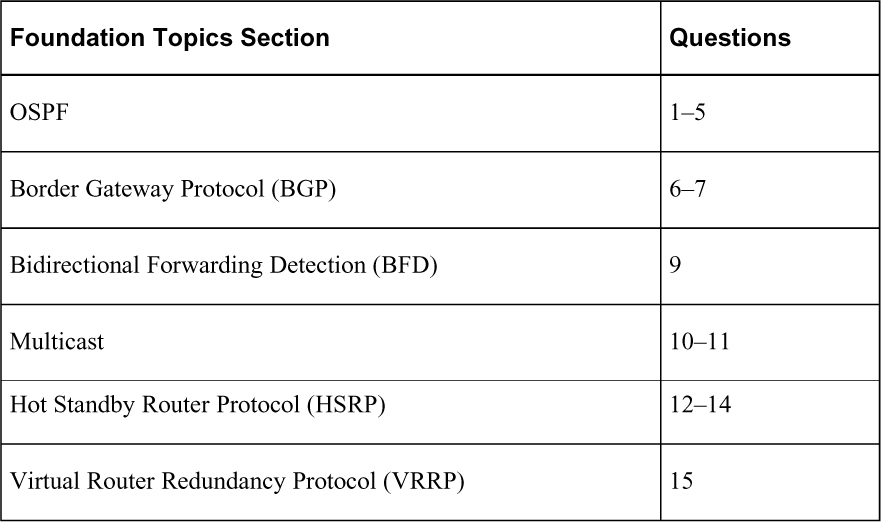Data centers are an essential element of the Internet and cloud infrastructure. It is the data networks that deliver data services around the world. This task would be impossible without routing. Even in the new generation of facilities like edge data centers, routers play an important role in connecting network services to end users.
This chapter covers the following key topics:
OSPF: This section discusses the NX-OS OSPFv2 and OSPFv3 routing protocols and includes OSPF area types, OSPF routing device functions, and NX-OS configuration commands plus an example.
Border Gateway Protocol (BGP): This section covers the NX-OS BGP external routing protocols, including Multiprotocol BGP (MBGP or MP-BGP), along with configuration commands and an example.
Bidirectional Forwarding Detection (BFD): This section covers NX-OS routing with BFD failure detection and configuration commands and an example.
Multicast: This section discusses the NX-OS Layer 2 and Layer 3 multicast protocols, which include IGMP, MLD, MDT, PIM, and multicast forwarding, along with configuration commands and examples.
Hot Standby Router Protocol (HSRP): This section discusses NX-OS HSRP as a First Hop Redundancy Protocol (FHRP) on the Ethernet network, including HSRP object tracking and load sharing along with configuration commands and an example.
Virtual Router Redundancy Protocol (VRRP): This section discusses the NX-OS VRRP operation, groups, and object tracking. In addition this section covers IPv6 first hop redundancy and configuration commands and includes an example.
The “Do I Know This Already?” quiz allows you to assess whether you should read this entire chapter thoroughly or jump to the “Exam Preparation Tasks” section. If you are in doubt about your answers to these questions or your own assessment of your knowledge of the topics, read the entire chapter. Table 1-1 lists the major headings in this chapter and their corresponding “Do I Know This Already?” quiz questions. You can find the answers in Appendix A, “Answers to the ‘Do I Know This Already?’ Quizzes.”
Table 1-1 “Do I Know This Already?” Section-to-Question Mapping

The goal of self-assessment is to gauge your mastery of the topics in this chapter. If you do not know the answer to a question or are only partially sure of the answer, you should mark that question as wrong for purposes of the self-assessment. Giving yourself credit for an answer you correctly guess skews your self-assessment results and might provide you with a false sense of security.
1. When Open Shortest Path First (OSPF) starts neighbor negotiations, what setting must match between OSPF neighbors for them to be able to establish adjacencies?
a. Router ID
b. Hello intervals
c. Link cost
d. IP address
2. Which two parameters will assist in designated router (DR) elections?( Choose two answers.)
a. IP address
b. Router ID
c. Priority
d. Code version
3. Designated router elections occur on which type of network? (Choose two answers.)
a. Point-to-Point
b. Broadcast (Ethernet)
c. NBMA mode
d. Point-to-Multipoint
4. What are two enhancements that OSPFv3 supports over OSPFv2? (Choose two answers.)
a. It requires the use of ARP.
b. It can support multiple IPv6 subnets on a single link.
c. It supports up to two instances of OSPFv3 over a common link.
d. It routes over links rather than over networks.